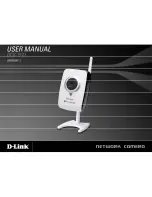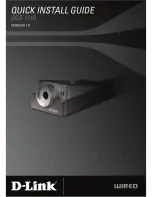
31
The door opener doesn't work
•
The changeover contact is potential-free. This means that you must use the appropriate external wiring because
the access system does not supply voltage/power to the door opener.
•
If the door opener has corresponding polarity markings (po and negative/-), ensure that it is correctly con-
nected to the access system and the voltage/power supply.
•
Check the polarity of the protective diode connected to the door opener.
• The transponder or fingerprint has not been taught in.
• The changeover contact cannot be activated with the master transponder or master fingerprint.
•
The NO/NC contacts should be wired correctly according to the door opener used (fail-safe or fail-secure door
opener).
Transponder is not recognised
•
Ensure to hold only one transponder in front of the RFID, (see Section 6, point 3).
•
The distance between the transponder and the access system should not exceed 3 cm.
•
Only EM transponders with a frequency of 125 kHz can be used.
•
Metal objects can adversely affect a transponder's functionality (for example, if you keep the transponder in a wallet
with metal coins).
Teaching in a new user transponder does not work
•
Ensure to hold only one transponder in front of the RFID, (see Section 6, point 3).
•
The distance between the transponder and the access system should not exceed 3 cm.
•
Only EM transponders with a frequency of 125 kHz can be used.
•
The memory is already occupied. Use another memory or clear the existing one before teaching in another tran-
sponder to the same memory.
•
If a MIFARE
®
chip card reader is connected to the Wiegand connection, it must be used to teach in new transpond-
ers.
•
If a card reader for 125 kHz transponders is connected to the Wiegand connection, the teach-in process should
be possible both via the access system and via the external card reader. For test purposes, use the external card
reader.
Teach-in of user fingerprints does not work or does not work properly
• If required, use another finger to test it. The fingerprint sensor must detect enough papillary strips for the fingerprint
to be valid.
• Place your finger in the centre and over the entire surface. The detected area of the skin surface must have a
minimum size for it to be valid. It does not matter which way around the finger is oriented. It is therefore possible to
teach in the finger ‘vertically’ at any time and later place it on the surface rotated by 90° to gain access.
•
Do not wear gloves.
The changeover contact is permanently active (and does not switch back)
•
The changeover contact activation time has been set to ‘0’ and is in toggle mode. Each valid access attempt with
the user transponder changes the changeover contact switch position.






































